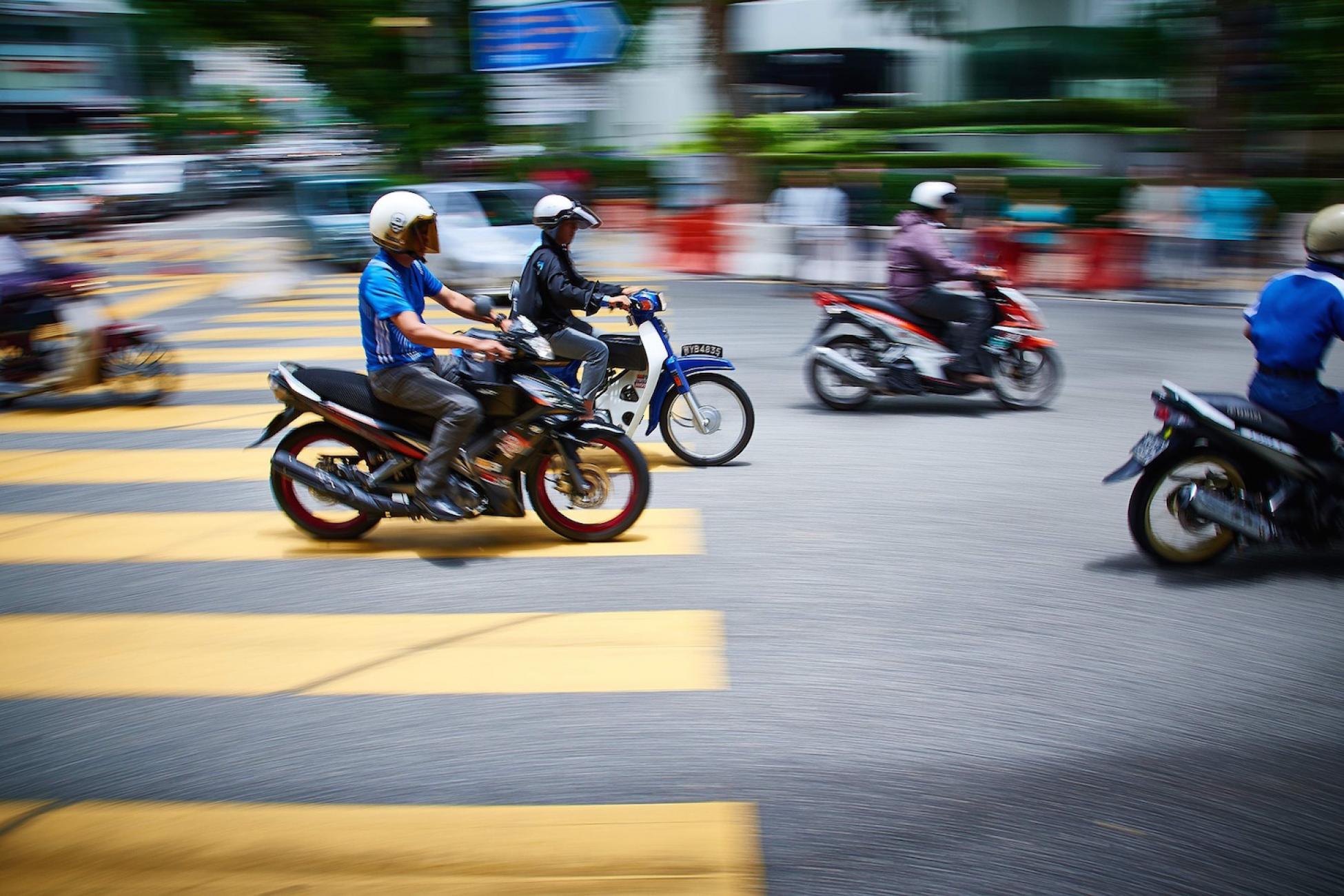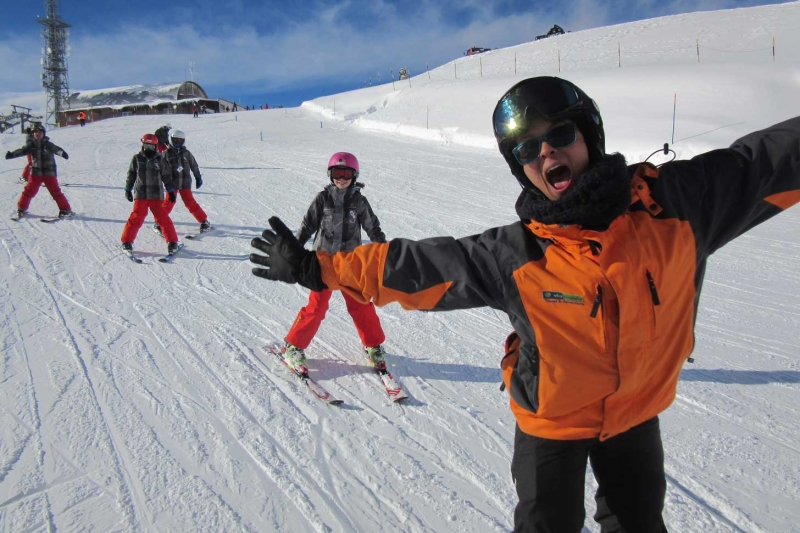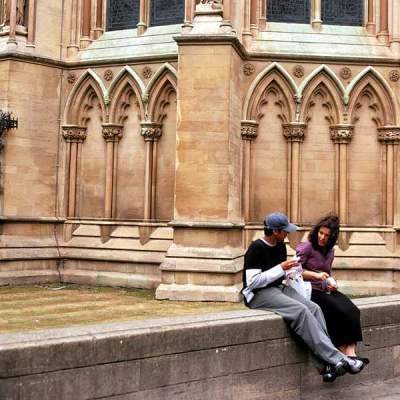It’s “the” postcard picture of ancient Bagan, Burma: a stunning skyline, speckled with thousands of pagodas and temples. The skies, studded with hot air balloons, are streaked with the rays of the rising sun.
Too bad it only took a broken toe, a bloody elbow and dark bruising for that perfect shot.
It started on a pitch-black road at four in the morning outside our guesthouse. The plan was for my travel buddy, Sam, and I to teach ourselves how to ride motorbikes in time for the 5:30 sunrise. First, we needed to learn how to operate the things at that ungodly hour and then gain enough confidence for the 30-minute drive to a famous pagoda known for its views.
It was supposed to be really easy. Every tourist we encountered during our time in Burma had promised so. The teenage boy who delivered our rentals assured us as much, with his 30-second demo before fleeing the scene. Just turn the key and start the engine. Turn the right grip for acceleration. The left is the brake.
Seeing entire families on a single bike (babies in tow), is as common as seeing street-side noodle stalls.
However, as someone who lives in downtown Toronto, I don’t drive; it’s just not practical for me. And I’ve seen enough bike-car altercations to scare me away from cycling in the city. Sam is from New York City and also commutes mostly by foot and transit for the same reasons. So, steering a vehicle was going to be a pretty foreign experience.
But everyone in Bagan does it.
In fact, unless we were willing to pay an exorbitant amount for a taxi or could bear walking on an unmarked, unlit road for more than an hour, getting to our sunrise spot via motorbike was our only option.
With two people aboard a bike meant for one, a wrong turn eventually veered us off the road and onto the sidewalk. Luckily there was no other traffic and, aside from some injuries that looked worse than they were, we were fine and made it to our destination—with a limp.
Needless to say, riding a motorbike can be harder than it looks. Travel can give you a sense of adventure that you might not otherwise have had at home—but that new stamp in your passport doesn’t come with a set of skills that you didn’t have before boarding your plane. The FIA Foundation, a global road safety group, reports road trauma as the leading cause of death and injury among international tourists. And according to the World Health Organization, 34 per cent of road traffic deaths in Southeast Asia involve motorized bikes.
If you do decide to give the venture a green light, here are some things to consider before starting the engine.
The bike
You’ll likely encounter a wide range of motorized bikes while in Asia, including ones with manual, semi-automatic, or automatic transmissions. Pick one to match your ability. Manual bikes are typically less expensive, but they’re not for newbies. Many manual and semi-automatic vehicles require changing gears and operating a clutch, whereas fully automatic vehicles have a simple twist-and-go handlebar grip.
Also keep in mind that, while you may have hopped on the back of taxi-scooters around Asia, not all bikes are equipped for more than one passenger—I learned this the hard way. A first-time driver, plus extra weight, plus a lawn mower-speed engine did not end well for us. You’ll want at least a 125cc engine (preferably more) if you plan on sharing a ride with a second person—never mind the fact that seeing entire families on a single bike (babies in tow), is as common as seeing street-side noodle stalls.
Take note of existing scratches and minor damage on your rental unit to avoid getting dinged when you return your bike. You may even want to opt for a well-worn ride over the sparkling, shiny one that could get scuffed up really easily. Consider taking photos of the vehicle as proof of the condition it was in when you rented it.
Take a ride around the block before committing, using this opportunity to double-check the bike’s brakes, engine and to get a general sense as to how confident you feel on it.
And don’t forget to get the contact details of your rental place. When we encountered a flat tire, our guesthouse (from which we rented) sent over an alternate ride when we dialed them up with our dilemma.
The clothes
It’s hot and humid in Southeast Asia, I get it. We all eventually succumb to the “same same” uniform: shorts, tank top and flip-flops. But if you’re new to motorbike riding, long pants can help prevent scraped legs or burns from hot engines and exhaust pipes. A sturdy closed-toe shoe can mean the difference between breezily climbing stupa steps two at a time, or, like Sam, limping around temples with a black, swollen toe.
Finally, remember to ask for a helmet. Many places won’t hand one over without your insistence.
The law
What about a license? The seemingly lawless roads in parts of Asia don’t necessarily reflect lawlessness when it comes to the authorities’ approach to proper permits.
In fact, despite how easy it is to rent a bike—you can take one out for less than 10 dollars a day in some areas—most regions require riders to have, at the very least, an International Driver’s Permit or a local license. Whether or not you actually get stopped by cops demanding to see your license will depend on your location. It was never an issue for us in Burma, but travellers say police are notoriously tough on foreigners in Bali.
According to insurance provider Ingle International, travel insurance generally does provide coverage for injuries from motorbike accidents. But it’s typically on the condition that you haven’t broken any local laws, which could include rules about helmets, licenses and permits. So, your insurance could be deemed worthless if the region you’re in requires a local license but you don’t have one. Needless to say, checking the regulations in your area is a good idea.
This article originally appeared in the Spring 2017 issue of Verge.
Add this article to your reading list




